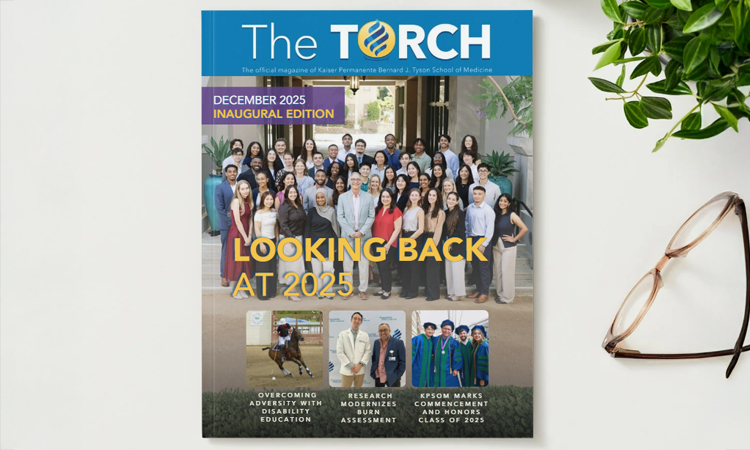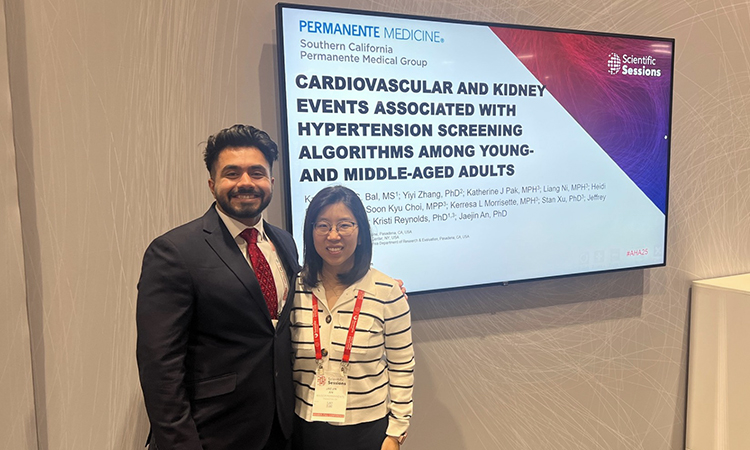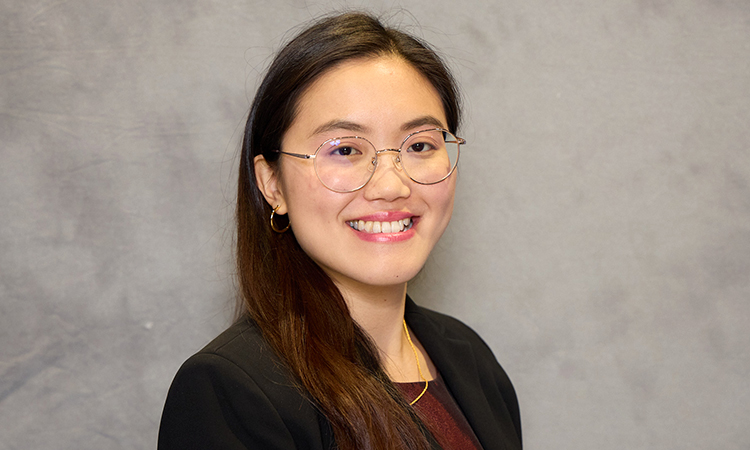In 2015, the National Academy of Medicine (NAM) published a landmark report, Improving Diagnosis in Health Care, documenting the extensive problem of diagnostic errors, one of the leading causes of harm in U.S. medical care. In recent years, researchers from Kaiser Permanente and the Kaiser Permanente Bernard J. Tyson School of Medicine have been at the forefront of research to find new solutions to reduce such errors, and now a KPSOM student has joined these efforts.
A new peer-reviewed study published in the journal Diagnosis, titled “The e-Autopsy/e-Biopsy: a systematic chart review to increase safety and diagnostic accuracy,” was co-authored by student Sophia Liang, along with Michael Kanter, MD, KPSOM Chair of Clinical Science; Ali Ghobadi, MD, Assistant Professor of Clinical Science; Kerry Litman, MD, Assistant Professor of Clinical Science; Lawrence D. Lurvey, MD, a Kaiser Permanente physician; and Maverick Au, a Kaiser Permanente quality consultant. Their research presented a methodology for studying how and why errors occur in specific diagnoses and looked at “innovative” systemic solutions that can be applied not only at Kaiser Permanente but in other healthcare organizations.
For Liang, this was an opportunity to collaborate with mentors who are leaders in this area of study – including Kanter, who has served as the Southern California Permanente Medical Group’s medical director of Quality and Clinical Analysis and executive vice president and chief quality officer for The Permanente Federation, and whose work on reducing diagnostic errors and delays is widely recognized – as well as opportunity to contribute to a prestigious research publication.
In this short interview, Liang shares her thoughts on the experience.
How did you come to collaborate with faculty members Drs. Kanter, Ghobadi, Litman, and the other authors of this study?
I met Dr. Kanter at the welcome event for the inaugural class, which was serendipitous because I would later learn of his work in diagnostic error and quality improvement. In addition, Dr. Ali Ghobadi was assigned to be my SBH (Scientific Basis of Healthcare, a component of Integrated Science coursework) facilitator ... Dr. Ghobadi took the time to get to know each of us in the small group, and he was the one who extended an invitation to me after I told him of my interest in diagnostic error. Later, Dr. Kerry Litman would serve as a guest facilitator in some of my SBH sessions.
I believe that the opportunity to interact with my mentors outside of a research context helped build a better team dynamic, and I feel that KPSOM’s smaller size helped to facilitate these opportunities.
As a student, it can be intimidating to join a project with such established and extensive contributions, but upon meeting (virtually, because of COVID), everyone was welcoming and encouraging of my participation.
What are the biggest takeaways from this study?
Our study describes the how-to of a process, called eAutopsy/eBiopsy (eA/eB), that can be used to find ways to decrease diagnostic error and thus improve patient care. We also included three examples of how eAutopsy/eBiopsy has been used at Kaiser Permanente to improve care delivery for patients with ectopic pregnancy, colorectal cancer, and abdominal aortic aneurysms. In surveying the work that has been done by the eA/eB team, I came away with an appreciation for the level of collaboration that Kaiser Permanente as an organization facilitates, as the success of eA/eB is predicated upon ongoing participation by researchers, members of leadership, physicians, electronic health record specialists, clinician reviewers, and more.
The publication, despite a succinct 5-page length, represents numerous hours and multiple years of sustained dedication to implementing incremental yet important improvements in care processes, all due to a desire to facilitate better patient outcomes. I am inspired by the efforts of my research mentors and their collaborators and hope to continue supporting Kaiser Permanente’s efforts in quality improvement.



